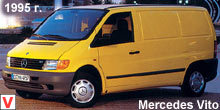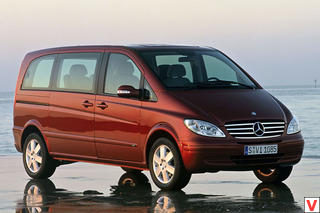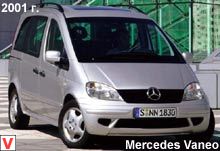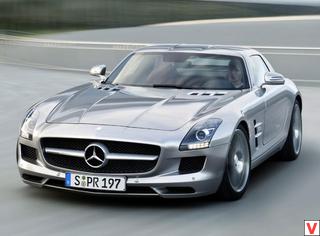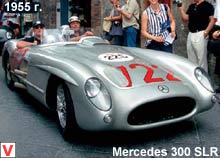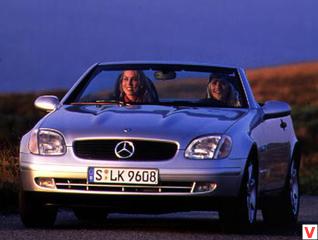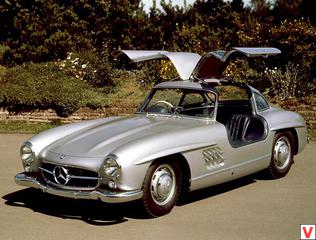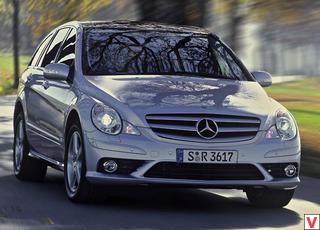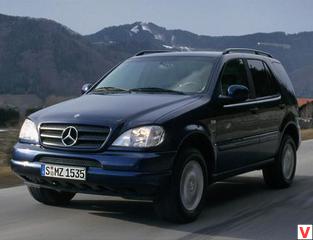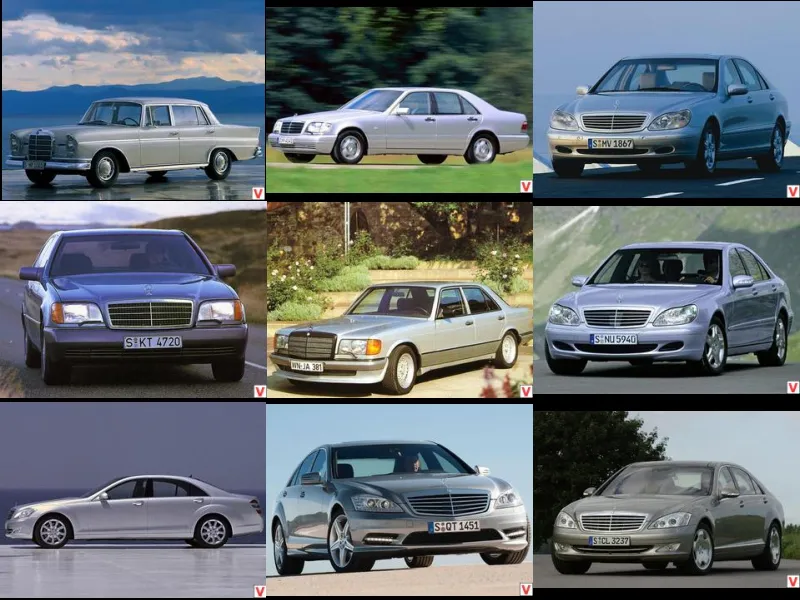
The history of the new S-class goes back to the 20s. Soon after the formation of the Daimler-Benz joint-stock company on June 26, 1926, an impressive 6-cylinder car was born that was a redesigned machine designed by Ferdinand Porsche. This bulky and clumsy car, which received the factory index W05, actually became the progenitor of the current large Mercedes.
In total, in 1928, 377 such cars were produced. The successors to the first big Mercedes were the Mercedes Mannheim 350/370 (body W09 and W10) and Nurburg 460/500 (body W08). The famous Mercedes Type 770, nicknamed "Kaiserwagen", closed the pre-war cohort: one of the 117 cars produced brought the German Kaiser Wilhelm II. This car (body W07) produced in the years 1930-1938. The 770th had an eight-cylinder engine of 7655 cc, 150-220 hp, maximum speed - 120 km / h.
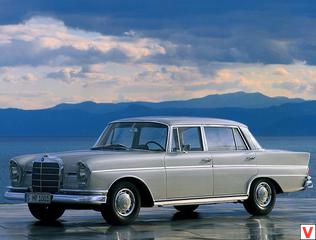
In the post-war history of the big Mercedes there are three major milestones: Mercedes 300 Adenauer (body W186), named after the first German Chancellor Konrad Adenauer, famous big Mercedes 600 (body W100). With the model 300SE (body W112) model 1961, the company began to use the letter "S" in the designation of its large sedans. "300SE" was distinguished by good passive safety at that time. He had a folding steering column upon impact, initially calculated crunch zones in the front and rear. This model has received oval vertical headlights and the first in the family of the S-Class V8 engine. Mercedes 280S / 350S / 450S (1972-1982 years) was officially called the S-class.
The model was equipped with in-line "six" and V8 engines. For those times the car was considered as a standard among representative models. Mercedes-Benz W126 series is considered to be the high point of the then unknown stylist, and now the legend of Italian designer art Bruno Sacco. Indeed, the body styling of the W126 so harmoniously combines the family features of its predecessors and the trends of modern automobile fashion that it was immediately recognized as exemplary for Mercedes-Benz cars.
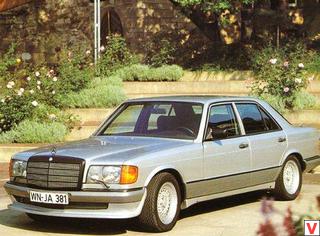
The design of the limousine widely used progressive alloy materials. Due to this, the new S-class turned out to be 50 kg lighter than the previous model, which had a positive effect not only on its dynamic and speed characteristics, but also on its economy. Mercedes W126 was produced with a four-door sedan and coupe, in the name of which the abbreviation SEC was invariably presented (S-classification of the model in Mercedes-based "rank tables", E-fuel injection, C-qoupe). In addition, in 1980 a sedan modification SEL (L-Lange), extended by 140 mm, began to roll off the conveyor.
The body models were made of high-grade steel and are distinguished by their excellent durability, which has retained its original condition for a long time. The power range of the car for all the years of its production includes 16 variants of 6- and 8-cylinder petrol engines, as well as one turbodiesel, which was installed on the version intended for export to North America. Mercedes engines have excellent performance and good reliability. But still preferable modification, equipped with 8-cylinder powertrains.
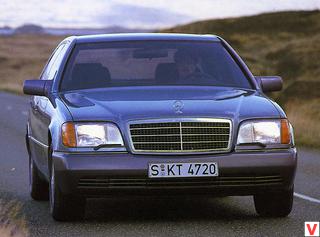
They are not only perfectly combined with an almost 2.3-ton colossus, but also have a much greater resource against their less powerful counterparts, and the 5- and 5.6-liter engines generally belong to the category of “unkillable”, if, of course, reasonable exploitation. Perhaps the only serious drawback of the V8 engines, whose block and cylinder heads are cast from an aluminum alloy, is their sensitivity to fuel quality. The recommended octane number of gasoline used in them should not be lower than 95. In general, if we consider the S-class power palette in terms of reliability and economy, here the engine of 5 liters is the best option.
As a transmission, a 4-speed “automatic” was installed on the model, although on versions equipped with 6-cylinder engines, a 5-speed manual transmission could also be mounted. Drive at the car was carried out exclusively on the rear wheels. Manned 6-cylinder engines, could also be mounted 5-speed manual gearbox. Drive at the car was carried out exclusively on the rear wheels. Manned 6-cylinder engines, could also be mounted 5-speed manual gearbox. Drive at the car was carried out exclusively on the rear wheels.
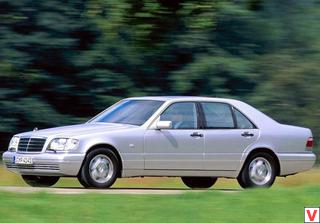
The salon of the Mercedes W126 is distinguished by a perfectly-designed interior, maximum comfort is offered - there is plenty of free space on both the front and rear seats, well-chosen trim materials are pleasing to the eye, and the organization of the driver’s workplace is impeccable. All-round view of the car is not as good as we would like, it is limited by wide racks and high head restraints. In addition, the car does not have the right exterior mirror.
About the possible amount taken on the "board" of the models of this class, in general, is not accepted, the useful volume of the trunk in the 505 l is enough, just load things in it is inconvenient due to the high edge. By the way, in the "one hundred and fortieth" last flaw was eliminated. His trunk lid almost fits with the rear bumper. Independent lever-spring suspension of all wheels copes with the "mixed" road irregularities and also has a good safety margin. From the point of view of maintainability, the Mercedes W126 is a rather complicated unit and requires qualified service with the obligatory use of original spare parts.
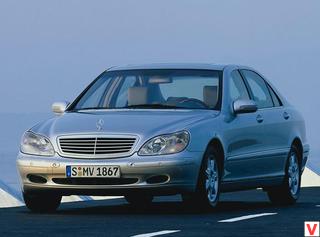
Both are expensive. There is only one consolation - by virtue of its excellent reliability, this model rarely breaks. The main malfunctions of the third-generation S-class include failure of the generator and service sensors, failure of the ignition system, poor tightness of the camshaft covers, uneven activation of the handbrake, relatively short life of clutch discs and rear brakes. By the early 1990s, the three-beam star Mercedes-Benz had faded somewhat.
Then the company decided to surprise the world with such an S-class, which has never been before. In terms of size, luxury and cabin capacity, as well as the quality of the materials used, the “W140-my” (factory index of the body series) should not have been equal. The debut of new items took place in 1991 in Geneva. The car made a splash. A giant (5115 / 5215х1885х1485 mm) and a heavy (2.56-2.72 tons gross weight) four-door sedan with two different bases of 3040 and 3140 mm - L (lange) was equipped with a 12-cylinder V-shaped 6.0-liter 394- powerful engine providing excellent dynamic performance. The car accelerates to a hundred in just 6.6 seconds.
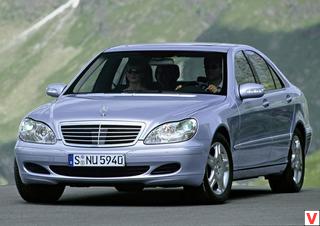
The power unit was paired with a five-speed automatic transmission. For the general solidity of the design, the car in Germany was called "Chancellor Kohl", and in other countries - "elephant". In Russia, the Mercedes-Benz W140 was nicknamed "the six hundredth" by the people, regardless of the specific model. In the West, one year after the debut of sedans, “individualists” were able to purchase the two-door S-Coupe hardtop coupe with the same set of engines as the sedans, except for the six-cylinder ones. This model is not so sporty in character.
Retaining the composure and comfort of the base sedan, it is rather intended to personify the consistency and independence of the owner. To maintain the image of the model, the company Mercedes quite often conducted upgrades "140th". So, already at the time of the premiere of the coupe (March 1992), it was announced that four engine valves would be installed with four valves per cylinder: on the 500 SE / SEL - 320 hp V8 (M119) engines, and on 600 SE / SEL - 394 hp V12 (M120).
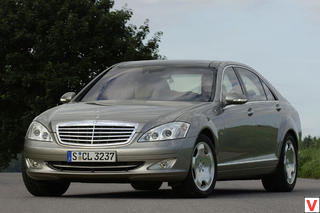
A month later, less affluent consumers were able to evaluate cheap versions of sedans: 280 S, equipped with 2, 8-liter 193-horsepower "single-shaft" petrol engine M104.942 and a 3.5-liter 150-horsepower turbodiesel OM606. The averages in the 320 SE / SEL model range with a 231-horsepower M104.992 and 420 SE / SEL with a 279-horsepower M117 engine then were not upgraded. In May 1993, Mercedes-Benz changed the usual indexing of models: the letter S now took its place in front of the numbers. A year later, the W140 body was easily retouched. In the history of the automotive industry, the "Hundred Fortieth" remains one of the most outstanding high-end passenger cars of the end of the century.
It is impossible not to admire them: stately, respectable from roof to wheels, inimitable in saturation with the most sophisticated technological advances and safety features. Spacious interior, rear seats with individual electric adjustment, excellent noise isolation and a spacious 525-liter trunk. Suspension with hydraulic steering clearance and automatically changing the stiffness of the shock absorbers is amazingly comfortable and is capable of swallowing even Russian potholes without any damage to itself.
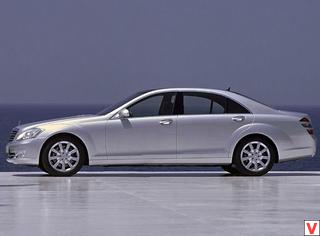
By the sacrament of manufacturing an extended four-and six-door stretch and armored limousines, which are created by the manufacturer, Mercedes-Benz fits with true German scrupulousness and scruples. Frankly, such models have nothing in common with the “civilian” S-klasse except for their appearance. The most acceptable combination of price, power and prestige is the eight-cylinder 279-horsepower S420, although 193- and 231-strong S280 and S320 with six-cylinder in-line engines can be a good option.
However, in these cases it is not necessary to count on significant savings, but these are the costs of operating models of this class, so that 20 liters of “95th” gasoline per 100 km in the city is considered the norm for S-class. Production of this version was stopped in the second half of 1998, replacing it with an S-klasse with a W220 body. In February 2000, the family of representative cars S-class on the new platform was expanded to 9 basic options. Two of them are equipped with 6- and 8-cylinder and economical tubon-supercharged diesel engines with a capacity of 197 and 250 hp.
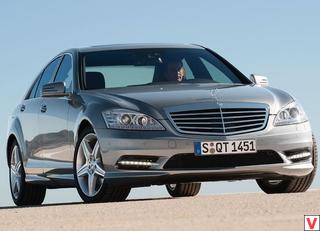
Three models (S320, S430 and S500) remained unchanged from the beginning of their production at the end of 1998. The novelty was the Mercedes-Benz S600 with a 5.3-liter 36-valve V12 engine with a capacity of 367 hp. Despite the smaller (relative to its predecessor on the platform type W140) engine power (due to the reduction of its own weight and excellent aerodynamic qualities), the dynamics of the new S600 even improved, and fuel consumption was reduced by about 20%.
Interestingly, the new 12-cylinder engine, equipped with six catalytic converters, already today complies with European standards for exhaust gas toxicity Euro-4, introduced since 2005. At the S600, an ABC body position control system is used, in which the parameters of the damping elements change over a few milliseconds depending on the driving conditions. Such a system, largely having sporty characteristics, is also available on request on other S-Class models, where Airmalic air suspension is standard.
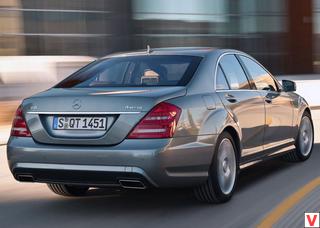
The program of the updated S-class sports sedan is present S55 AMG with a 5.4-liter V8 engine with 360 hp The shapes and proportions of the body of the W220 are ideally suited for the definition of a “sports sedan,” which was what the AMG subsidiary tuning firm used. It differs from the serial S500 with a specially tuned suspension, 18-inch alloy wheels, more powerful brakes and a number of other features. Executive class can not think without limousines. They also appeared on the new chassis - these are the S500 Pullman and S600 Pullman models. The novelties are distinguished by an impressive length (about 6.16 m) and a wheelbase lengthened by 1 m.
Standard equipment includes: a glass wall (separating the rear passengers from the driver), six side airbags in the rear doors and the middle part of the cabin, two bots "curtains Safety window-bag and electric adjustment of the rear seats-seats. Multimedia consoles with two monitors, a TV, a mini fridge, working tables, communication facilities, etc. are available on request. Sedans and limousines S500 and S600 also offered in the performance of the Guard with factory reservation for the European protection class M4 or B6 / 7. Elements of special protection are made of special steels, plastics and composite materials. They are integrated into the body structure. S-Klasse 2003 model year.
Externally, little has changed. In front - a new bumper, the lower air intake of which makes the body in a physically larger one. The grille is higher and has changed the angle. Bi-xenon headlights are now hidden behind crystal clear glass, which, coupled with new reflectors, makes the S-Klasse optics sparkling even without electricity. New steel and body exterior mirrors, in the lower part of which appeared light bulbs illuminating the area in front of the door so that the driver or front passenger did not enter into anything. Red glass taillights received not two, as before, but four horizontal cuts in white.
The interior designers have applied four dozen innovations, however, out of modesty did not disclose the entire list. First of all, attention is drawn to the LCD monitor on the center console. The large 6.5-inch screen is now standard equipment for all S-Klasse modifications. The inscription "Mercedes-Benz" has disappeared from under the screen - and without that it is clear that it is not Hyundai. Wheel, alas, remained the same. “Alas” because it is not always possible to keep him sedately in the place where the firm recommends: four fingers between the spokes, a big one above the buttons.
If you grab the steering wheel more "sporty", then the palms just fall into the place where the skin turns into a tree, which is not too pleasant and comfortable. But now the steering wheel has electric heating as an option. Another innovation, designed to keep the owner’s hands clean and comfortable, is opening the trunk by pressing a button in the cabin or on the remote, a similar procedure for its “contactless” closing is an option. Finally, customers are offered an exclusive designo couture interior package, which includes particularly valuable types of wood, kid leather, alcantara and nubuck.
The range of power units is extensive. The most economical was the diesel V6 with a volume of 3.2 liters and a power of 204 hp, which is slightly more than the power of the previous diesel engine, which was installed on the S320. The average fuel consumption of 7.7 liters per "hundred". The four-liter diesel V8 was so fast that its maximum speed had to be “choked” by electronics.
Power - 250 hp Acceleration to 100 km / h - 7.8 seconds. Petrol engines are now four. "Three hundred and twentieth" will no longer be. Moreover, the six-cylinder S350 does not match the nameplate: its working volume is 3.7 liters, and its power is 245 hp.
Two more are the S430 with the 280-strong V8 and the “500th”, which has 306 “horses”. Six-and eight-cylinder models may have four-wheel drive, which was a novelty - the S-Klasse 4-matic story did not yet know. Four hosts are ordered as an option if the owner wants to get more smoothness and safety from the car on slippery roads. However, if the all-wheel drive "five hundredth" is not inferior to its classic fellow in dynamics, then the S 350 4-matic starts up to a hundred by 0.3 seconds. slower, and his maximum speed is smaller.
Crowns range of gasoline engines, of course, "six hundredth." The new V12, equipped with a dual turbocharger system and an intercooler, is capable of developing 500 hp. Power compared with the predecessor model has grown by more than a third, torque - twice. All-wheel drive version of the "six hundredth" will not. As well as the “short” - all twelve-cylinder models now have a 12 cm longer wheelbase. All the others - with the exception of the S320 CDI - may have an “stretched” cabin as an option. The “long” S500 has active multi-contour seats in front.
A year ago, 61 percent of all S-Klasse sold had an elongated base - so most of the cars are bought for passengers, but for some reason, most of the physical joys are available to those sitting in front. Computers are built into the front seats of the S-Klasse, which, depending on the steering angle of the steering wheel, lateral acceleration and speed, inflate or blow away air cavities in the backs of the seats to provide optimum lateral support to the driver and front passenger. As with the E-Klasse, this feature of the seats is optional. About the "six hundredth" one should generally write a separate poem.
More than two tons, which in complete silence shoots up to the "hundred" in just 4.8 seconds, deserve it. An interesting new system of protection of passengers is Pre Safe: if the ESP and Brake Assist sensors detect the appearance of a critical situation, the result of which could be an accident, the electric motors tighten their seat belts tightly; the front and rear passenger seat cushions - if the latter are separate electrically adjustable - move backward, their seatbacks are upright, like on an airplane during takeoff and landing, and the open hatch in the ceiling closes. All this really works.
Only for some reason, a picture was drawn: after a rain rides around the city, maneuvering in a dense stream, the “six hundredth”, and its passengers are lugging with a belt, straightening, and even the hatch over their heads click. And you can not turn off all this economy. And designers, by the way, are already thinking about what to add to the following elements in Pre Safe. Essentially a new generation of S-class (body has the designation W221) presented in 2005. This five-seat sedan class F was positioned as a 2006 model. Available as a regular and extended version of the vehicle. The size of the new generation exceeds its predecessor.
Moreover, not only the length has grown, but also the wheelbase, which provided passengers with even more comfort. The wheelbase has been increased by 70 mm (80 mm for the long wheelbase version), the length has grown by 33 (43), the width by 16, and the height by 29 mm. The standard version is 5076х1871х1473 mm, the wheelbase is 3035 mm. The luggage compartment volume has increased to 560 liters. Gather a car in Germany. Exterior changes have not changed. S-Class W221 parted with round and oval headlights, so that the sedan has become more strict and conservative look.
In profile, the car - the very swiftness and perfection. The drag coefficient Cx = 0,266. In general, the new S-class looks modern, dynamic, luxurious, prestigious and corporate. The cabin is a harmonious combination of high technology and traditional elements. The arcuate architecture, the lack of a console and a rectangular analogue clock in the center remind of distant ancestors. The interior is dominated by smooth lines, wide wooden panels and keys made from metallized plastic. In the center of the instrument panel is the display of the Comand system (navigation, audio system, climate control, built-in GSM phone and other functions), controlled by a joystick on the floor tunnel.
Among the options are branded multi-contoured seats (which was first debuted at the E-class), which change the degree of lateral support depending on the steepness of the turn. These chairs will not only provide a comfortable fit, but also warm, massage, take a “safe” position in case of an accident. In short, the style is techno-retro, a mixture of tradition and innovation. The car received numerous security systems. The Pre-Safe Plus system is able to predict the risk of a collision. It automatically monitors neighboring cars and, if necessary, slows down or, conversely, accelerates the car.
Sensors for assessing the degree of such risk - eleven. Thanks to the Night View Assist system, you can see not only what is in the headlights, but also hidden far ahead and on the sides. Designers claim that, for example, a pedestrian on the side of the road can be seen 50 meters earlier than the xenon light can reach. There are 8 more airbags and curtain airbags, seat belts with pretensioners, an electric parking brake and ABC roll suppression system. Among other new products is the upgraded Airmatic air suspension with two modes of operation, which has become harder.
Initially, it was proposed two engines: a 3.5-liter V6 engine with a capacity of 272 hp (S350), as well as a new eight-cylinder engine of 5.0 liters, developing a power of 388 hp and an impressive torque of 530 Nm already starting at 2800 rpm. It accelerates the S 500 from zero to 100 km / h in 5.4 seconds. Since the first quarter of 2006, the range of engines has been expanded to include a V6 CDI engine with a diesel particulate filter as standard.
This direct-injection engine develops 231 hp. and a maximum torque of 540 Nm starting at 1600 rpm. This means that the new S 320 CDI surpasses the predecessor in power by 13 and in torque by 8%. The power of a twelve-cylinder engine of 5.5 liters, which is equipped with the flagship S 600 increased to 517 hp, torque increased by 4% and is an impressive 830 Nm from 1900 rpm. V6 and V8 engines are equipped with a unique seven-speed automatic transmission 7G-TRONIC, included in the basic configuration.
All motors comply with environmental standards Euro 4. A year later, the all-wheel drive S-Class 4Matic debuted. The appearance of the all-wheel drive version is associated with fierce competition in the premium segment. At the heart of all-wheel drive transmissions Mercedes - an electronic system that combines the anti-skid system, ABS and stabilization system. Inter-axle and interwheel differentials free. The torque is distributed between the axles in the proportion of 40:60. The role of locks is performed by the 4ETS and ESP anti-skid system.
All systems are controlled by a central computer, which, tracking the readings of a variety of sensors, gives commands to the systems. If the sensors register the loss of the wheel adhesion, the electronics will smoothly slow down the “stuck” wheel and redistribute the force to the wheels that are in the best conditions. Thanks to all-wheel drive, driving on slippery road surfaces is now as simple as driving on asphalt. Yes, and with overcoming obstacles it became easier: it is necessary to press a small key on the center console, and the Airmatic active suspension will lift the car a few centimeters.
Since its launch in 2005, 270,000 copies have been sold, which claims the status of the car is the most successful in the luxury class. Four years after the launch of the W 221 series, Mercedes-Benz presents a restyled version of the 2009 S-Class. It is not easy to recognize the updated S-Class from the outside - the exterior is almost untouched. The upgraded grille with forked horizontal slats makes the profile more swept. The car received from designers other forms of headlamps with LED edging, new bumpers (rear with integrated exhaust pipes), modified rear lights. Inside there are also no radical changes.
The color scheme changed, a little more varnished wood and chrome appeared, the hub of the steering wheel was completely sewn into the skin, and its lower spokes diverged to the rim at a wider angle. With the advent of twilight, the S-class cabin was filled with a cozy light streaming from under the wooden panels, the shade of which can be changed according to the mood - from cold blue to amber-yellow. There are new electronic devices. For example, the SplitView monitor on the center console and the Attention Assist system, which determines the degree of driver fatigue, using 70 parameters.
In the restyled sedan options package, there is a rear-view camera, an autonomous preheater / heater, a panoramic glass roof, and many other attributes peculiar to a premium car. The manufacturer has expanded its arsenal of entertainment for the rear passengers. They can now independently change the settings of the machine, set music, video and connect to external devices. To listen to music, a radio, a CD / DVD player with MP3 function, an equalizer with volume control depending on the speed, and a Music Register system with a 7.2 GB hard disk with approximately 2500 digital recordings in MP3, AAC or WMA formats are provided.
The range of engines includes eight advanced gasoline and diesel engines, of which two diesel options (S350 CDI - 235 hp and S450 CDI - 320 hp), and six - gasoline with six (S 350 / S 350 4MATIC - 272 hp), eight (S 450 / S 450 4MATIC - 340 hp, 4.7 L volume and S 500 / S 500 4MATIC - 388 hp, 5.5 l volume) and twelve ( S600 - 517 hp) cylinders. Complement the line of power units versions of the AMG studio: S 63 AMG with a V8 engine (525 hp, volume 6.2 l) and S65 AMG with a six-liter V12 (612 hp).
All of these engines have been upgraded to improve fuel efficiency as part of the BlueEFFICIENCY package, which includes aerodynamic optimization, fuel pumps with fuel control and a rational fuel-consuming shift program for the standard 7G-TRONIC automatic transmission. These measures have allowed the developers of Mercedes-Benz to reduce fuel consumption and CO2 emissions by up to 7% compared with previous models. The S-Class has been supplemented with the S400 Hybrid version - with the BlueHybrid hybrid powerplant. It consists of a 3.5-liter V6 with a capacity of 279 hp, an electric motor (15 kW / 20 hp) and a high-voltage lithium-ion battery.
As a result, the total power of the hybrid unit is 299 hp. and 385 Nm of torque. It is noteworthy that the hybrid module is extremely compact: it is placed on the left under the hood in place of a regular battery, which makes the hybrid only 75 kg heavier than its donor - the Mercedes S350. On a 100 km track in a combined cycle, a car with such an installation requires about 8 liters of fuel. Carbon dioxide emissions are only 186 g / km. The hybrid engine is also aggregated exclusively with a 7-speed 7G-Tronic automatic gearbox. The security system meets the highest requirements. The most advanced technology available.
An optional adaptive headlight control system (Adaptive Highbeam Assist) adjusts the light beam so as not to blind oncoming drivers. An advanced night vision system (Night View Assist) recognizes and marks pedestrians on the monitor. Images taken from a video camera on the windshield of the car are processed by the optional Speed Limit Assist system, which recognizes road signs of speed limits while driving and displays the maximum allowable speed on the central display (standard for Mercedes S 600). Among other innovations, the automatic stabilization system with side wind Active Body Control stands out.
Using lateral acceleration sensors, transmitting data to the ESP system, the sedan is able to resist side winds, deflecting the car from a straight course. Adaptive cruise control Distronic Plus operates at speeds up to 200 km / h and automatically maintains the necessary distance to the vehicle in front, brakes to a complete stop and accelerates to the desired speed. Torque Vectoring Brake provides additional safety in critical conditions and even greater maneuverability of the car due to a special internal deceleration in relation to the rotation of the rear wheel, which allows the sedan to "fit" in the corners precisely without sacrificing dynamics.
The official presentation of the new generation of sedan Mercedes-Benz S-Class with body index W222 was held in May 2013 at a special event in Hamburg, the world premiere will be held at the motor show in Frankfurt in September. The base for the car in the back of the W222 was a completely new platform, while initially a “long” version of the chassis was developed, which was later shortened and used as the base. Aluminum was actively used in the construction, which led to a decrease in the “dry” weight of the car by 100 kg, while due to new technical solutions body rigidity improved by 50 percent. Design changes are evolutionary, but they all went to the benefit of the model.
Compared to its predecessor, the W221, this generation of the S-Class has become more elegant, having lost its massive wings, but with more raised sidewalls. The radiator grille was increased in size, the head optics received beautiful curvatures of the LEDs, the rear lights were slightly reduced. The car has increased in size, compared with its predecessor, he sent longer, wider and lower. The length of the body is now 5 116 mm (+20), width - 1 899 (+28), height - 1 496 (-25), and the value of the wheelbase remained unchanged (3 035 mm). The length of the S-Class Long version with an increased wheelbase has grown to 5,246 millimeters, and the distance between the axles is 3,165 mm.
In the interior of the cabin there have been significant changes, but as before it surrounds the passengers with an atmosphere of luxury and comfort. Another form of steering wheel, made in a two-spoke version, as well as redevelopment of the dashboard, covered on top with a long visor that extends to the middle of the front panel, and combined with a large 12.3-inch touchscreen, immediately catches the eye. in the amount of four pieces, designers and analog clocks placed there. The developers have provided 5 different options for the rear seats. The number of seat adjustments is simply going wild.
It seems that the seats are able to take absolutely any shape and configuration, if only the driver was comfortable. At the request of the buyer, the heating of the door armrests, the rear seats with the massage function, the automatic air freshener in the cabin and the powerful 1500-watt Burmester audio system can be included in the vehicle equipment. The cabin has everything you could wish for. This includes a refrigerator, a multimedia system control panel, a DVD player and wireless headphones, cooling / heating holders, folding tables. The suspensions are completely new, and the engines have been upgraded to improve their fuel efficiency.
Initially, only three types of propulsion systems are available to buyers of the S-Class 2014. Under the hood of the S 500 is a 4.7-liter petrol V8 twin-turbo with a return of 455 hp. and 700 Nm (acceleration from zero to hundred in 4.8 seconds, maximum speed is limited to 250 km / h). The S 350 BlueTEC version is equipped with a 258-horsepower (620 Nm) diesel “six” with a working volume of 3.0 liters (from 0 to 100 km / h in 6.8 seconds, a maximum speed of 250 km / h). The third version was the hybrid S400, which received a three-liter diesel engine with a power of 306 hp, as well as an electric motor.
In this version of the sedan, you can drive at a speed of up to 238 km / h and accelerate to 100 km / h in 7.2 seconds. Mercedes cars have always been a leader in safety issues, and the S-class in the back of the W222 has also become an exception. Sedan received security complex Intelligent Drive, which includes many different systems. To prevent accidents, the perimeter of the car is completely under the control of cameras and sensors. For safety reasons, an inflatable cushion is built into the safety belt.
It increases the contact of the belt with the body 3 times. This reduces the risk of injury to the internal organs and chest. The rear seats fold out and allow you to take a reclining position and an air-bag is built into them. His task is to raise the passenger when the accident and prevent it from slipping out from under the seat belt. Naturally the airbag and seat belt will only be relevant if if the passenger is buckled up.
And so that the passengers did not forget to buckle up, then the engineers went for a little trick. Whenever you sit in the back seat, the safety flint lock travels 70 mm and is highlighted. As if unobtrusively reminds of himself. Among other things, the car is equipped with LED head optics, not blinding oncoming drivers, and the brightness of the rear lights is automatically adjusted, depending on the time of day and driving conditions.
A year after the debut of the S-Class W222, the manufacturer plans to replenish the line with a charged version from AMG and an economical S500 Plug-in Hybrid, which consumes only four liters of fuel per hundred km in the combined cycle. In addition, later S-Class 2014 will acquire several variants of the body.
